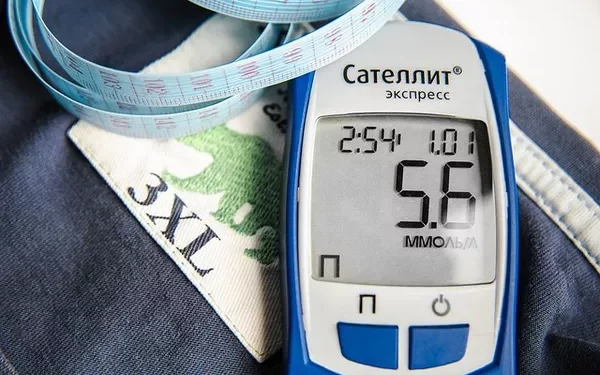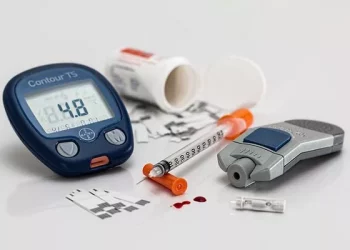Monitoring blood glucose levels is a crucial part of managing diabetes, but for individuals with diabetes, especially those with type 1 diabetes or insulin-dependent type 2 diabetes, keeping track of ketones is just as important. Ketones are chemicals produced by the liver when the body breaks down fat for energy, typically when there is not enough insulin to convert sugar into energy. While this is a normal metabolic process, high levels of ketones in the blood can be dangerous and are a warning sign of diabetic ketoacidosis (DKA), a life-threatening complication.
Traditionally, ketone levels are measured using specialized ketone testing strips or a separate ketone meter, but advancements in diabetes care technology have made it possible to measure ketones using a blood glucose monitor. In this article, we will explore how to measure ketones using a blood glucose monitor, the benefits of monitoring ketones, and the importance of managing ketone levels in diabetes.
Understanding Ketones and Their Role in Diabetes
To better understand the importance of measuring ketones, it’s necessary to first understand what ketones are and how they relate to diabetes.
Ketones are produced when the body doesn’t have enough glucose to use for energy. Normally, the body relies on glucose, which is derived from carbohydrates, to fuel its cells. However, when glucose is not available—either because there is not enough insulin to allow glucose into cells or because the body is running low on carbohydrates—it turns to fat as an alternative fuel source. This fat is broken down in the liver into ketones, which the body then uses for energy.
In healthy individuals, ketones are produced in small amounts and do not usually accumulate to dangerous levels. However, for people with diabetes, particularly type 1 diabetes or insulin-dependent type 2 diabetes, the process of fat breakdown may go unchecked. Insulin resistance or insufficient insulin can lead to a build-up of ketones in the blood, which can result in diabetic ketoacidosis (DKA). DKA occurs when ketones build up to dangerous levels, making the blood more acidic and leading to a range of symptoms such as nausea, vomiting, confusion, and difficulty breathing. If untreated, DKA can be life-threatening.
Thus, monitoring ketone levels is an essential part of diabetes management, especially for those at risk of DKA.
How to Measure Ketones with a Blood Glucose Monitor
While traditional methods of measuring ketones involve using specific ketone test strips or meters, certain blood glucose monitors are equipped with the ability to measure ketones in addition to blood sugar levels. These specialized meters typically use a test strip designed to measure blood beta-hydroxybutyrate (BHB), the most common and significant ketone produced during ketosis.
Step-by-Step Process for Measuring Ketones with a Blood Glucose Monitor
Step 1: Check if Your Blood Glucose Monitor Can Measure Ketones
Before attempting to measure ketones, ensure that your blood glucose monitor is capable of testing for ketones. Not all glucose meters are designed for this purpose. The majority of standard blood glucose meters only measure glucose levels, so you need to have a meter specifically designed to measure ketones. For instance, certain models, such as the Precision Xtra, are equipped with ketone testing capabilities.
If you already have a glucose monitor, check the manufacturer’s instructions to see if it offers the option to measure ketones. Some meters may require separate ketone test strips, while others may allow you to use the same strips for both glucose and ketone testing.
Step 2: Gather the Necessary Equipment
To measure ketones, you will need the following equipment:
Blood Glucose Monitor: A compatible blood glucose monitor that can measure both glucose and ketones.
Ketone Test Strips: These are special strips designed to measure blood ketone levels. Ensure that the strips are compatible with your monitor.
Lancet Device: A lancet device to prick your finger to obtain a blood sample.
Alcohol Swab: For cleaning your fingertip before obtaining the blood sample.
Cotton Ball or Tissue: For wiping the blood from your finger after testing.
Step 3: Prepare for the Test
Before testing, make sure to wash your hands thoroughly to remove any contaminants that could interfere with the test. You can use warm water to help increase blood flow to your fingers, which can make pricking easier.
Next, prepare the ketone test strip by inserting it into the monitor as per the device’s instructions. Be sure that the test strip is inserted correctly and securely, as improper insertion can lead to inaccurate results.
Step 4: Prick Your Finger to Obtain a Blood Sample
Use the lancet device to prick the side of your fingertip. Applying a gentle pressure around the prick site will help bring a small drop of blood to the surface. Wipe away the first drop of blood with a tissue or cotton ball to ensure the sample is free from impurities.
Once you have a clean drop of blood, apply it to the test strip. The strip will absorb the blood, and the monitor will analyze the sample for ketone levels. Wait for the monitor to display the results, which typically takes just a few seconds.
Step 5: Interpret the Results
After a few moments, your blood glucose monitor will display the results on the screen. The unit of measurement for ketones is typically millimoles per liter (mmol/L). The results will give you a numerical value that indicates your blood ketone level.
Here’s a general guide for interpreting the results:
Normal Ketone Levels: 0.0 to 0.6 mmol/L. This range is considered normal and suggests that your body is not producing excessive ketones.
Mild Ketosis: 0.6 to 1.5 mmol/L. This range indicates that your body is in mild ketosis, which is typically safe for people with diabetes, as long as blood glucose levels are well-managed.
Moderate Ketosis: 1.5 to 3.0 mmol/L. At this level, it’s important to monitor your condition closely. While it’s not necessarily dangerous, moderate ketosis can increase the risk of DKA, especially if blood glucose levels are also high.
Severe Ketosis: 3.0 mmol/L and above. This is a critical range, and you should seek immediate medical attention, as there is a significant risk of developing diabetic ketoacidosis (DKA). If your blood glucose levels are also high, this could be an emergency situation.
Step 6: Take Action Based on the Results
After measuring ketones, it’s important to take appropriate action based on the results:
Normal Ketone Levels: If your ketone levels are in the normal range, there is no immediate cause for concern. Continue to monitor both your blood glucose and ketone levels regularly, especially if you’re feeling unwell or have been experiencing higher-than-usual blood glucose levels.
Mild Ketosis: If your ketone levels are slightly elevated, it’s important to check your blood glucose levels as well. If blood glucose levels are also elevated, it may indicate that your insulin needs adjusting. Consider increasing your fluid intake to help flush out the excess ketones from your body.
Moderate Ketosis: If your ketones are in the moderate range, you should monitor your blood glucose levels more frequently. If your blood glucose levels are also high, contact your healthcare provider or seek medical advice to prevent the risk of DKA.
Severe Ketosis: If your ketone levels are very high, it’s essential to seek immediate medical attention. Severe ketosis combined with high blood glucose levels can lead to DKA, which is a medical emergency.
Step 7: Follow-Up with Your Healthcare Provider
Regardless of the results, it’s a good practice to follow up with your healthcare provider if you notice any significant changes in your ketone levels. They can help adjust your treatment plan, including insulin therapy, to ensure that your blood glucose and ketone levels remain in a safe range.
Why It’s Important to Measure Ketones Regularly
Measuring ketones regularly is important for several reasons, particularly for individuals with type 1 diabetes or those who are insulin-dependent. Some of the key benefits include:
Preventing Diabetic Ketoacidosis (DKA): Regular ketone testing helps detect early signs of DKA, which can prevent the condition from becoming life-threatening.
Managing Insulin Therapy: By monitoring ketone levels, you can adjust your insulin regimen to better manage your diabetes and avoid complications.
Ensuring Proper Hydration and Electrolyte Balance: Elevated ketones can cause dehydration and imbalances in electrolytes. By monitoring ketones, you can take steps to ensure proper hydration and maintain electrolyte balance.
Tracking the Effectiveness of Your Diabetes Management: Regular ketone measurements can give you valuable insights into how well your diabetes management plan is working. If ketone levels are consistently high, it may indicate the need for adjustments in your diet, exercise, or medication.
Conclusion
Measuring ketones using a blood glucose monitor is an effective and accessible way to manage diabetes and prevent complications such as diabetic ketoacidosis (DKA). By following the proper steps for testing and interpreting the results, individuals with diabetes can take proactive measures to maintain their health. Regular monitoring of both blood glucose and ketone levels is an essential part of diabetes management and can make a significant difference in preventing long-term complications. If you’re unsure about how to use your blood glucose monitor for ketone testing, consult with your healthcare provider to ensure that you are using the correct equipment and interpreting the results accurately.
Taking charge of your diabetes management through ketone monitoring, along with careful attention to diet, exercise, and medication, can help you lead a healthier life while minimizing the risks associated with high blood ketones.
Related topics:
What Constitutes a Good Blood Sugar Level
























